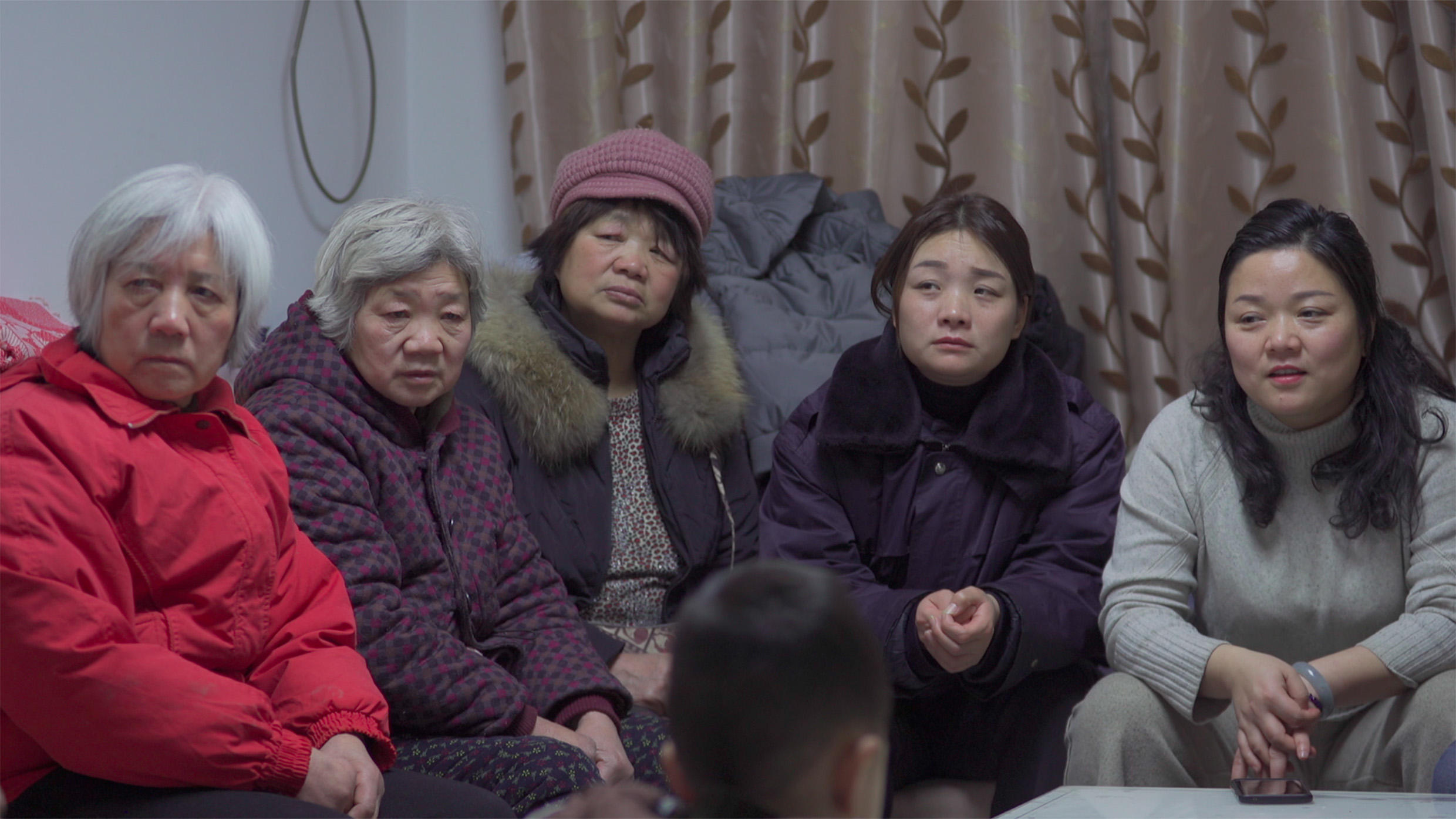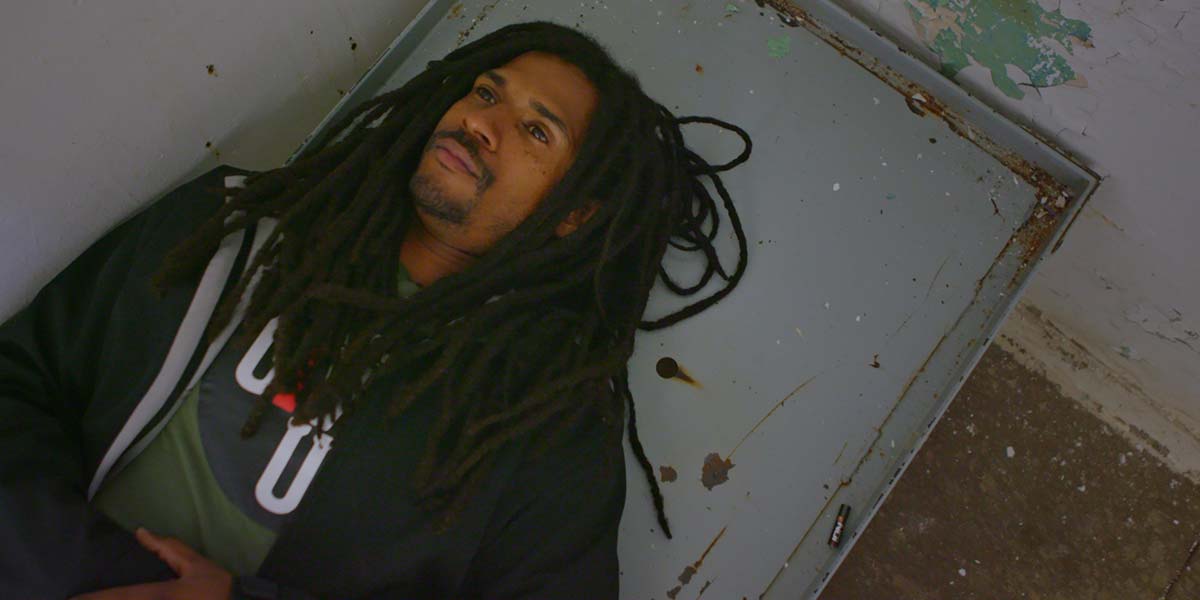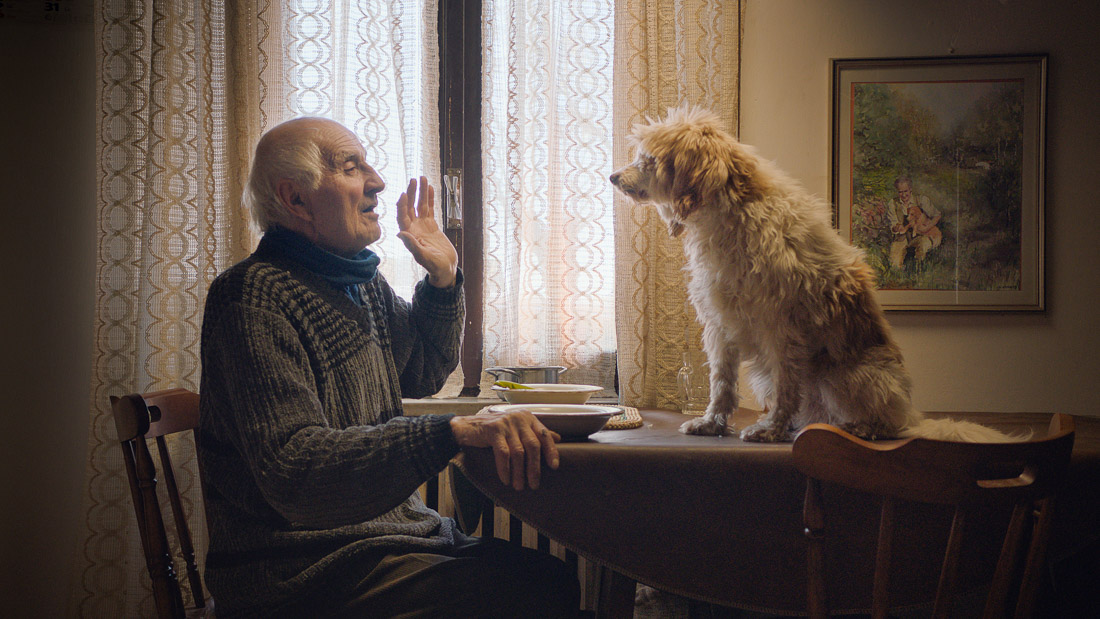The London-based Open City Documentary Festival (OCDF) works towards decentring perspectives with a carefully curated programme. Diligently guiding us through the vast landscape of non-fiction art, the showcased works push boundaries of form and content. A plethora of guests, generous with their time and thoughts, accompany the screenings. With six days of virtual goodies and on-screen togetherness, the OCDF space is brimming with masterclasses, panels, industry boot camps and workshops. Ranging from Confronting the Colonial Gaze to Performance in Non-Fiction, they invite us to put questions marks to our consumption of images and to keep a critical eye on the screen.
Here are a few notes on yet another outstanding edition:
The Choice records a difficult discussion. Director Gu Xue sits with family members as their sick aunt is taken off respiratory support at the intensive care unit. The son, Shi Hengbo, called everyone together to talk it through and make arrangements. Discussions of logistics and practicalities are guided by cultural traditions and intimate togetherness. The careful deliberation gradually shifts to repetitions and frustrations. Lost in debate and the anticipation of loss, they slowly, haltingly, arrive at the conclusion that she’ll stay at the hospital for now.
With bare simplicity, the film captures the essence of this familial drama. Observing the family meeting across gender, generations and class in one single take, Gu Xue opts for clarity, directness and transparency. It fits the mood and the purpose of the gathering. More than once, we hear the four cousins–the younger generation –urging the four aunts, their elders, not to drag their feet, to speak their mind and yield the floor. They all agree that the fifth aunt’s fate is a collective matter, but the question of responsibility is raised. One cousin says: “We are the younger generation, we stay quiet.” Another cousin actually does remain quiet throughout the whole discussion. Are they implying that it’s up to the aunts to decide? As the camera slowly pans in the crowded little living room, I wonder about the invasiveness of the lens. I wonder why we’re there. Some of family members furtively gaze into the lens, clearly conscious of the camera’s presence. The son then reproaches one of his cousins for behaving differently in front of the family. It seems other things were said in private. Could it be that the cousin’s loud, commanding and slightly hubristic behaviour is, in fact, prompted by the camera? Does our presence as silent spectators have any weight in this discussion?
The responsibility of the audience is also central in The Observer, one of the video letters of Bottled Songs, an ongoing essay project by Chloé Galibert-Laîné and Kevin B. Lee. This desktop documentary series investigates online terrorist media and their propaganda strategies, tackling our fascination, disgust and ignorance while doing so. Tracing and inspecting images and videos produced by the Islamic State, the authors e-mail each other to share the progress and observations they make along the way. In this particular chapter, Galibert-Laîné discovers that one of the videos she works on—images showing a group of ISIS-captives walking naked through the desert—has been uploaded by Les Observateurs, a French media platform for citizen journalism. She is disturbed by the perfect alignment of motives between the terrorists, the press platform and the government that financially supports it. It leads her to question the responsibilities of (social) media, and by extension their readers, users and consumers. By reproducing these images and making them available for us, the media become owners, archivists and gatekeepers of ISIS-content. Galibert-Laîné thus shifted the scope to another kind of terrorist: ourselves.
There is one moment in The Observer that isn’t a desktop recording. In a brief shot, we see a camera avert its lens from the computer screen, revealing a glimpse of more horrifying images. The overload of visual violence has suddenly become too much. Both authors share their (scripted) interpersonal and digital explorations on the screen, and express their impressions, emotions and thoughts while doing so. You feel included in a very intimate space when Galibert-Laîné deeply sighs at the sight of dead bodies in the video letter My Crush Was a Superstar. A similar thing happens when Kevin B. Lee discusses the British accent in The Spokesman. By juxtaposing John Cantlie, the British news reporter kidnapped by ISIS, and Lawrence of Arabia, he divulges his childhood admiration for a controlled and authoritative voice. The statement, almost a confession, amid all the horror of his research, is intimate and full of tenderness.
Galibert-Laîné and Lee invite us, with their smart blend of film criticism and creative non-fiction, to look over their shoulders and see what they see. This invitation, not unlike The Choice, puts the spectator in a position that is humbling, intrusive and privileged at the same time. Their personal approach, combined with the desktop recordings, creates the impression of being sucked into a web vortex. This digital stroll, however, is diary-like, contained, and it provides short interludes, moments of contemplation, between each video letter.
Kevin B. Lee was also invited to the festival as co-curator of the Black Lives Matter (BLM) Video Essay Playlist. Aiming to support and highlight the BLM movement, Cydnii Wilde Harris, Will DiGravio and Lee started cataloguing and aggregating audiovisual, mostly crowdsourced, content that centred Black visions and voices. The UK festival gave them the space to showcase a selection of video essays and interview the creators of the content on the live streamed panel Seen and Heard: Selections from the Black Lives Matter Video Essay Playlist. Among them we find Claire Borealis’ Real Talk: Is BreadTube Discussing Race ‘Right’?. The YouTube creator, known as ‘Professor Flowers’ among her peers and 523,000 subscribers, dissects in her video the problems of leftist You-tubers (=BreadTube) discussing race. Repurposing segments gleaned on BreadTube, well-known illustrations of police violence and items from news broadcasts, she argues that the race debate needs more nuance. The main issue really is that society’s power dynamics are replicated in the microcosm of the platform. The vast majority of leftist content creators is white. As a result, matters of race are veiled within a white filter.
A more subtle issue, then, relates the audiences to the few Black creators. When Black creators address their content to a white audience, they adopt a form and tone that waters down the impact of the message. The academic, informative or explanatory approaches are favoured to avoid a backlash of white fragility, often leading to an erasure of emotions and nuance in the debate.
While this episode of Real Talk accurately pinpoints the issues with BreadTube, it is unclear which approaches Borealis considers more effective in reaching racial equity on the platform. Presented with the dichotomy of the problem, non-mixed BreadTube subchannels come to mind, organizing debates and discussion among separated communities. But Borealis doesn’t believe a strict separation to be effective. She leaves us with a rather open end by mentioning her desire for spaces where layered discussions would allow both creators to express their emotions and audiences to ask their questions. She won’t compromise her content for them, but she doesn’t exclude her white subscribers from joining in. It’s an effective way to get her subscribers, privileged or not, eager for the next video.
Brooklyn-based artist Jazmin Jones, on the contrary, addresses her videos explicitly to Black and queer femmes. Unlocked is indeed unapologetic. Building on the web phenomenon of apology-videos, she harvested and recycled images of white people cutting off their dreadlocks on camera. By narrowing her search to sessions involving Black participants, she found the two videos used in Unlocked. As a metaphor for reparations, she highlights the joy of the Black women cutting the dreads and, despite the gravity of the multiple intersecting symbolism, injects the work with a lot of humour. It’s the same raw freshness and upbeat candour that was also present in her previous compilation-video, WETLOOK.
Briefly raised during the panel is the question of whether the subject, the Black Lives Matter movement, can expand the definition of a video essay. DiGravio explained that labels and categories were unavoidable to make the sheer volume of audiovisual works digestible for use. The subject matter is characterized by its urgency and by an avalanche of opinions and takes on the problem of systemic racism. The creators have, in centralizing the visual output of the movement, aligned a wide variety of videos, from scholarly criticism to Tiktok content. Has the specificity of the content and the body of work produced by the BLM movement the power to push the formal boundaries of the video essay?
The poll held by Sight and Sound listing the best video essays annually confirms that there’s no monolith or prototype, and that the definition of a video essay is in itself rather flexible. For Chloé Galibert-Laîné, it is wonderfully straightforward: “I’m not sure I know exactly what a video essay is or is supposed to be… We are using this term as a way to bring a community together.”
It seems that the programmers of Open City Documentary Festival share the same vision. A pliant definition of the form certainly didn’t prevent them from programming video essays and film essays alongside of each other. Galibert-Laîné‘s premise especially holds water when the different forms address the same societal issues. Doesn’t Cydnii Wilde Harris’s video essay, Cotton: The Fabric of Genocide – screened during the Seen and Heard panel as well—denounce the same dynamics of racism as Amel Alzakout and Khaled Abdulwahed’s film essay Purple Sea? Their tone is diametrically opposed but both works aim to de-centre perspectives. Harris uses elegant humour to dismantle The Old South, a short film released by MGM in 1938 as a marketing stunt for the awaited Gone With the Wind. She identifies its racist discourse, declaring cotton, not slavery, as the incentive for the Civil War, by juxtaposing images of industrial machines processing cotton with film footage from popular films depicting slavery. Blending fitting shots of melting film stock and Fabric of Our Lives-commercials with an on-the-nose editing technique makes the four minutes short a deliciously smart treat.
The rawness of Purple Sea, in comparison, is unbearable. We see that Amel Alzakout is attempting to cross the Mediterranean sea to Europe. Somewhere between Istanbul and Lesbos, the smuggler’s boat that she’s on capsizes into the water. Her waterproof wrist camera floats up and down the sea, the images unsettled and unsettling. When submerged, we hear muffled sounds and see body limbs of others float around her like algae. In a slightly deferred voice-over, she shares her private thoughts and talks to Khaled, who has crossed legally and awaits her in Berlin. Information gradually seeps in. Each time the unstable camera catches glimpses of the water surface, rage and fear make their way through the screen. You hold your heart. Orange life jackets, shrieking safety whistles, people shouting. Most poignant perhaps are the trivialities Alzakout recounts from her preparation ahead of the trip; how she put their cat on a flight to Berlin, “because cats don’t need papers,” and how Khaled reminded her to look for the best service provider. Unlike The Choice, Purple Sea doesn’t leave you enough time to wonder why you’re there. You just hold your heart until it breaks and your perspective shifts.











